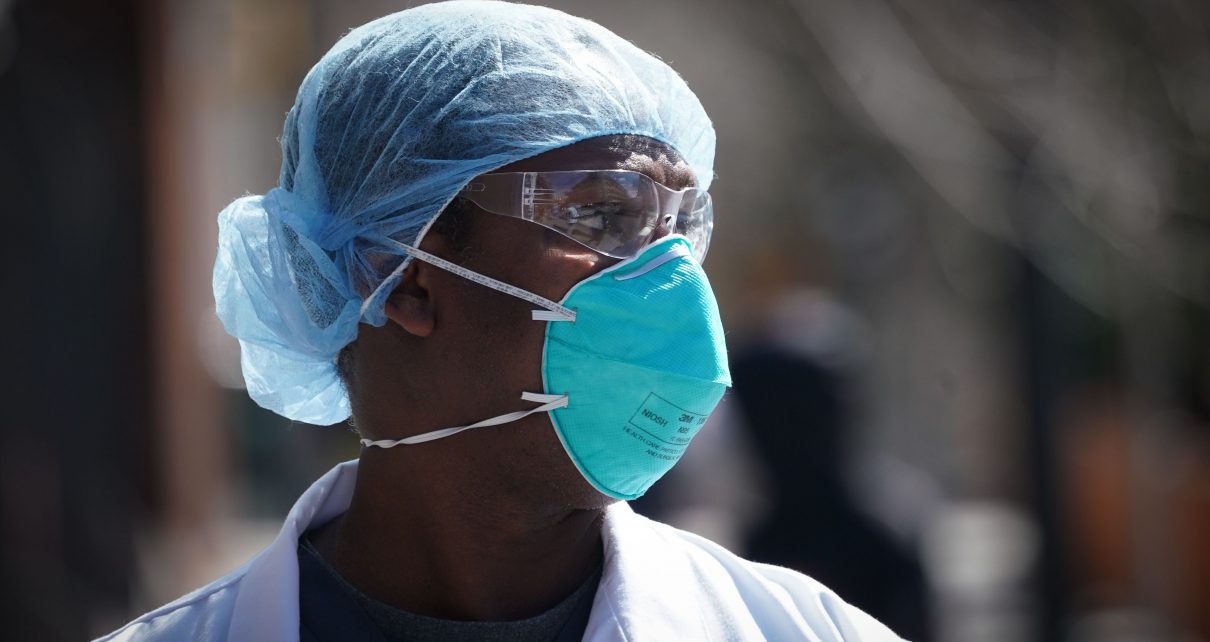Wearing high-grade filter masks can help protect against the novel coronavirus. But after a few hours, these tight-fitting devices can also make it really hard to breathe. N95 respirators, for example, are famously good at blocking viral particles—but they can also reduce the amount of available oxygen by up to 20 percent. Now some Stanford University researchers are addressing this problem with a portable device that pumps pure O2 directly to the wearer.
“My main motivation is trying to bring back the oxygen concentration in the mask,” says co-developer John Xu, a mechanical engineer at Stanford’s Nanoscale Prototyping Laboratory. This feature could make the respirators more bearable. “People who wear N95s for long periods of time either feel like they’re overheating [or] almost like they can’t breathe because the mask fits so tightly and occupies such a large surface area of the face,” says Yousi “Josey” Oquendo, a medical student at Stanford’s School of Medicine and a robotics engineer at the university’s Collaborative Haptics and Robotics in Medicine Lab. “While comfort may not seem like it’s as important for safety, it actually is—because the more times people touch the mask and try to take it off in order to breathe better, the higher risk that they’re going to cross-contaminate their mask.”
Xu typically develops fuel cells for more sustainable cars. This line of work also happens to involve concentrating oxygen from regular air, of which O2 comprises roughly 21 percent. “We use an electrochemical process to produce oxygen from water by electricity. And then there is also a” process that involves passing air through a membrane multiple times to concentrate oxygen on one side, he explains. Xu is testing both approaches to develop a small box that can be worn at the waist and that feeds pure, clean oxygen into a standard N95 mask through a tube.
Oquendo is helping to develop attachments that will let the oxygen-generating component Xu is working on connect to any N95. “Our design principle is that you can use a [new] N95 [every time you wear one], and then our attachment can be hooked to the N95,” Xu says.
The oxygen coming into the mask will also push out used air through a separate attachment. “Even more so than the secondary oxygen supply, just filtering out carbon dioxide and humidity from those masks is very important for both comfort and for temperature control for the user,” Oquendo says. Removing humidity not only makes the N95 easier for a person to wear but also reduces moisture damage, she notes. Prolonging the life of personal protective equipment (PPE) could help it remain in use for longer at a time when masks are in short supply.
Previous research has examined the way that high-grade filter masks restrict oxygen intake, notes Moriah Szpara, a virologist at Pennsylvania State University, who was not involved in developing the new device. “There’s a pretty sizable number of studies out there that have just documented that this problem exists,” she says. “This is not the first attempt to address the problem or document the problem. But it’s certainly a novel approach and one I haven’t seen before.”
Existing tools called powered air-purifying respirators (PAPRs) filter air and then blow it into a helmetlike piece of headgear. Oquendo says the cost of PAPRs can be on the order of $1,000. The Stanford device would have a maximum price of $300, Xu estimates. It also works with existing N95s, which means it covers less of the face. “Anything that’s going to cover your face to a greater degree is more intrusive and [obstructs] your view in a greater way,” Szpara says.
The researchers have developed a prototype and plan to test it in collaboration with Stanford Hospital. Once a successful model has been tested, the device should be relatively easy to manufacture, because the oxygen-producing unit and attachments rely on existing materials. “We’re trying to use normal-use plastics that are able to be produced in large amounts,” Oquendo says. “The engineering pieces that are being used currently are pieces that are mass manufactured, that are widely available to people around the country.”
Read more about the coronavirus outbreak from Scientific American here. And read coverage from our international network of magazines here.




